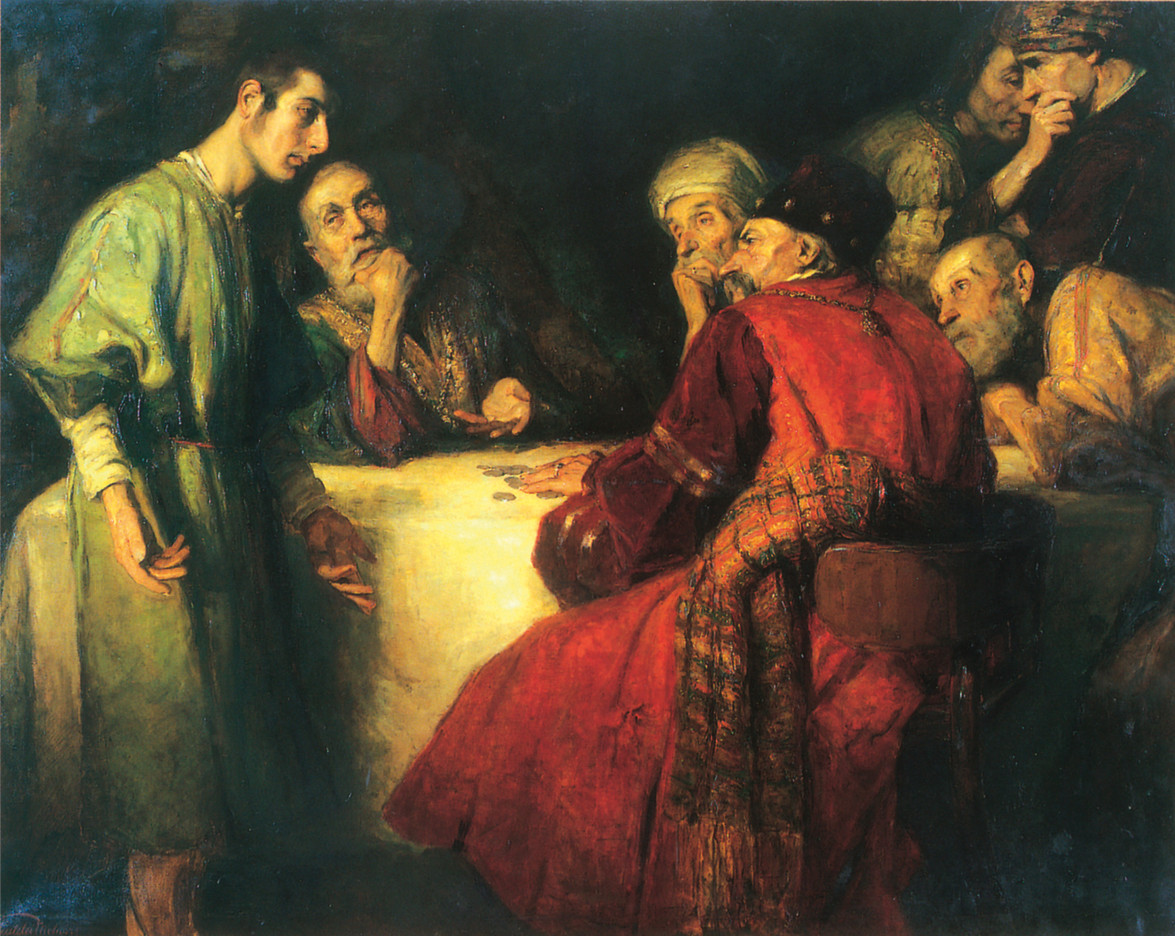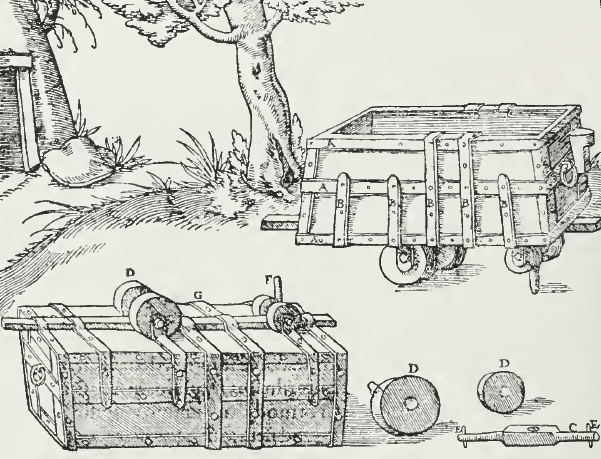|
Silberling
Silberling is the colloquial name for the n-coaches of the Deutsche Bundesbahn, a type of regional passenger coach of which more than 5,000 units were built from 1958 to 1981. Nearly all of the coaches have undergone extensive modernisation – these modernised units are widely known as ''Mintling'', ''Grünling'' ("greenling") or ''Rotling'' ("redling") after their exterior colours. The term ''Buntling'' ("colourfulling") is used to denote refurbished Silberling coaches in general. Origin of the name The term ''Silberling'' derives from the coaches' stainless steel body which gave them a unique look during their term of service. Translated it means "silverling" in the English language. Historically, Silberling is a silver coin and widely known from the bible: the thirty pieces of silver (in the German Bible: "30 Silberlinge", Matthew 26,14) Judas obtained for his treason. Technical data Type overview * Indicator z: Central control (''Zugsammelschiene'') * Indicator r: ... [...More Info...] [...Related Items...] OR: [Wikipedia] [Google] [Baidu] |
Silberling
Silberling is the colloquial name for the n-coaches of the Deutsche Bundesbahn, a type of regional passenger coach of which more than 5,000 units were built from 1958 to 1981. Nearly all of the coaches have undergone extensive modernisation – these modernised units are widely known as ''Mintling'', ''Grünling'' ("greenling") or ''Rotling'' ("redling") after their exterior colours. The term ''Buntling'' ("colourfulling") is used to denote refurbished Silberling coaches in general. Origin of the name The term ''Silberling'' derives from the coaches' stainless steel body which gave them a unique look during their term of service. Translated it means "silverling" in the English language. Historically, Silberling is a silver coin and widely known from the bible: the thirty pieces of silver (in the German Bible: "30 Silberlinge", Matthew 26,14) Judas obtained for his treason. Technical data Type overview * Indicator z: Central control (''Zugsammelschiene'') * Indicator r: ... [...More Info...] [...Related Items...] OR: [Wikipedia] [Google] [Baidu] |
Deutsche Bundesbahn
The Deutsche Bundesbahn or DB (German Federal Railway) was formed as the state railway of the newly established Federal Republic of Germany (FRG) on 7 September 1949 as a successor of the Deutsche Reichsbahn-Gesellschaft (DRG). The DB remained the state railway of West Germany until after German reunification, when it was merged with the former East German Deutsche Reichsbahn (DR) to form Deutsche Bahn, which came into existence on 1 January 1994. Background After World War II, each of the military governments of the Allied Occupation Zones in Germany were ''de facto'' in charge of the German railways in their respective territories. On 10 October 1946, the railways in the British and American occupation zones formed the ''Deutsche Reichsbahn im Vereinigten Wirtschaftsgebiet'' (German Imperial Railway in the united economic area), while on 25 June 1947, the provinces under French occupation formed the Südwestdeutsche Eisenbahn. With the formation of the FRG these succe ... [...More Info...] [...Related Items...] OR: [Wikipedia] [Google] [Baidu] |
Passenger Car (rail)
A passenger railroad car or passenger car ( United States), also called a passenger carriage, passenger coach ( United Kingdom and International Union of Railways), or passenger bogie ( India) is a railroad car that is designed to carry passengers. The term ''passenger car'' can also be associated with a sleeping car, a baggage car, a dining car, railway post office and prisoner transport cars. The first passenger cars were built in the early 1800s with the advent of the first railroads, and were small and little more than converted freight cars. Early passenger cars were constructed from wood; in the 1900s construction shifted to steel and later aluminum for improved strength. Passenger cars have increased greatly in size from their earliest versions, with modern bi-level passenger cars capable of carrying over 100 passengers. Amenities for passengers have also improved over time, with developments such as lighting, heating, and air conditioning added for improved passen ... [...More Info...] [...Related Items...] OR: [Wikipedia] [Google] [Baidu] |
Stainless Steel
Stainless steel is an alloy of iron that is resistant to rusting and corrosion. It contains at least 11% chromium and may contain elements such as carbon, other nonmetals and metals to obtain other desired properties. Stainless steel's resistance to corrosion results from the chromium, which forms a passive film that can protect the material and self-heal in the presence of oxygen. The alloy's properties, such as luster and resistance to corrosion, are useful in many applications. Stainless steel can be rolled into sheets, plates, bars, wire, and tubing. These can be used in cookware, cutlery, surgical instruments, major appliances, vehicles, construction material in large buildings, industrial equipment (e.g., in paper mills, chemical plants, water treatment), and storage tanks and tankers for chemicals and food products. The biological cleanability of stainless steel is superior to both aluminium and copper, having a biological cleanability comparable to glass ... [...More Info...] [...Related Items...] OR: [Wikipedia] [Google] [Baidu] |
Thirty Pieces Of Silver
Thirty pieces of silver was the price for which Judas Iscariot betrayed Jesus, according to an account in the Gospel of Matthew 26:15 in the New Testament. Before the Last Supper, Judas is said to have gone to the chief priests and agreed to hand over Jesus in exchange for 30 silver coins, and to have attempted to return the money afterwards, filled with remorse. The Gospel of Matthew claims that the subsequent purchase of the Potter's field was fulfilment, by Jesus, of a prophecy of Zechariah. The image has often been used in artwork depicting the Passion of Christ. The phrase is used in literature and common speech to refer to people "selling out", compromising a trust, friendship, or loyalty for personal gain. Biblical narrative According to the Gospel of Matthew, Judas Iscariot was a disciple of Jesus. Before the Last Supper, Judas went to the chief priests and agreed to hand over Jesus in exchange for 30 silver coins. Jesus was then arrested in Gethsemane, where Judas rev ... [...More Info...] [...Related Items...] OR: [Wikipedia] [Google] [Baidu] |
Bible Translations Into German
German language translations of the Bible have existed since the Middle Ages. The most influential is Luther's translation, which established High German as the literary language throughout Germany by the middle of the seventeenth century and which still continues to be most widely used in the German-speaking world today. Pre-Lutheran Germanic Bibles The earliest known and partly still available Germanic version of the Bible was the fourth century Gothic translation of Wulfila (c. 311–380). This version, translated primarily from the Greek, established much of the Germanic Christian vocabulary that is still in use today. Later Charlemagne promoted Frankish Bible translations in the 9th century. There were Bible translations present in manuscript form at a considerable scale already in the thirteenth and the fourteenth century (e.g. the New Testament in the Augsburger Bible of 1350 and the Old Testament in the Wenceslas Bible of 1389). There are still approximately 1,000 manuscri ... [...More Info...] [...Related Items...] OR: [Wikipedia] [Google] [Baidu] |
Gospel Of Matthew
The Gospel of Matthew), or simply Matthew. It is most commonly abbreviated as "Matt." is the first book of the New Testament of the Bible and one of the three synoptic Gospels. It tells how Israel's Messiah, Jesus, comes to his people and forms a community of disciples, of how he taught the people through such events as the Sermon on the Mount and its Beatitudes, and how Israel becomes divided and how Jesus condemns this hostile Israel. This culminates in his departure from the Temple and his execution. At this point many people reject Jesus, and on his resurrection he sends the disciples to the gentiles. Matthew seems to emphasize that the Jewish tradition should not be lost in a church that was increasingly becoming gentile. The gospel reflects the struggles and conflicts between the evangelist's community and the other Jews, particularly with its sharp criticism of the scribes and Pharisees with the position that through their rejection of Christ, the Kingdom of God ha ... [...More Info...] [...Related Items...] OR: [Wikipedia] [Google] [Baidu] |
Judas Iscariot
Judas Iscariot (; grc-x-biblical, Ἰούδας Ἰσκαριώτης; syc, ܝܗܘܕܐ ܣܟܪܝܘܛܐ; died AD) was a disciple and one of the original Twelve Apostles of Jesus Christ. According to all four canonical gospels, Judas betrayed Jesus to the Sanhedrin in the Garden of Gethsemane by kissing him on the cheek and addressing him as "master" to reveal his identity in the darkness to the crowd who had come to arrest him. His name is often used synonymously with betrayal or treason. The Gospel of Mark gives no motive for Judas's betrayal, but does present Jesus predicting it at the Last Supper, an event also described in all the other gospels. The Gospel of Matthew states that Judas committed the betrayal in exchange for thirty pieces of silver. The Gospel of Luke and the Gospel of John suggest that he was possessed by Satan. According to , after learning that Jesus was to be crucified, Judas attempted to return the money he had been paid for his betrayal t ... [...More Info...] [...Related Items...] OR: [Wikipedia] [Google] [Baidu] |
Rail Transport In Germany
, Germany had a railway network of , of which were electrified and were double track. Germany is a member of the International Union of Railways (UIC). The UIC Country Code for Germany is 80. Germany was ranked fourth among national European rail systems in the 2017 European Railway Performance Index assessing intensity of use, quality of service and safety. Germany had a very good rating for intensity of use, by both passengers and freight, and good ratings for quality of service and safety. Germany also captured relatively high value in return for public investment with cost to performance ratios that outperform the average ratio for all European countries. Germany's rail freight of 117 billion tons/kilometer meant it carried 17.6% of all inland German cargo in 2015. Overview In 2018, railways in Germany transported the following amount of passengers and freight. In 2014 (local passenger) and 2015 (other), there were the following amount of railway cars in Germany. Deutsc ... [...More Info...] [...Related Items...] OR: [Wikipedia] [Google] [Baidu] |
History Of Rail Transport In Germany
:''This article is part of the history of rail transport by country series'' The history of rail transport in Germany can be traced back to the 16th century. The earliest form of railways, wagonways, were developed in Germany in the 16th century. Modern German rail history officially began with the opening of the steam-powered Bavarian Ludwig Railway between Nuremberg and Fürth on 7 December 1835. This had been preceded by the opening of the horse-drawn Prince William Railway on 20 September 1831. The first long-distance railway was the Leipzig-Dresden railway, completed on 7 April 1839. Forerunners The forerunner of the railway in Germany, as in England, was to be found mainly in association with the mining industry. Mine carts were used below ground for transportation, initially using wooden rails, and were steered either by a guide pin between the rails or by flanges on the wheels. A wagonway operation was illustrated in Germany in 1556 by Georgius Agricola (image right) ... [...More Info...] [...Related Items...] OR: [Wikipedia] [Google] [Baidu] |







